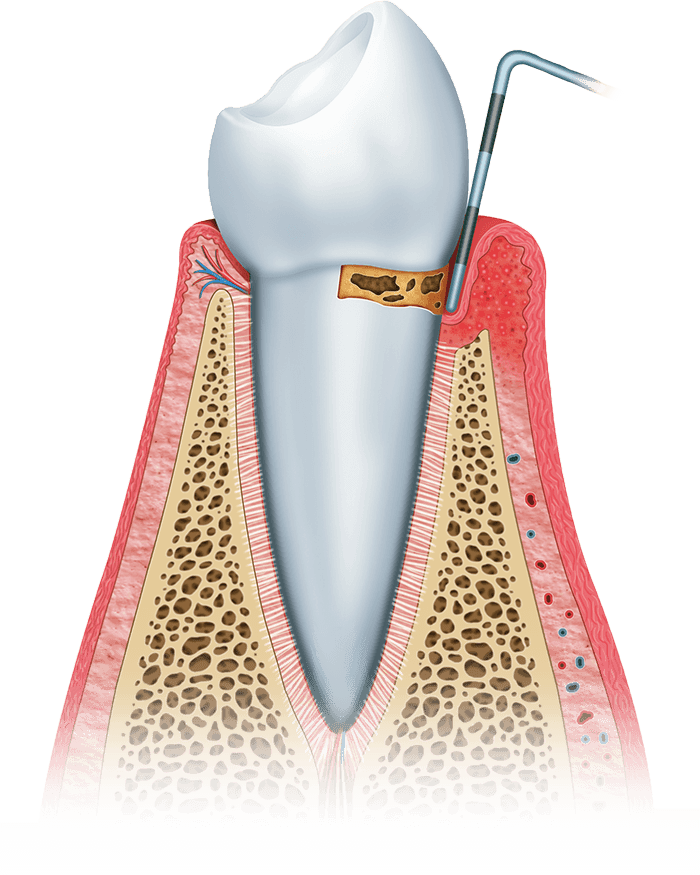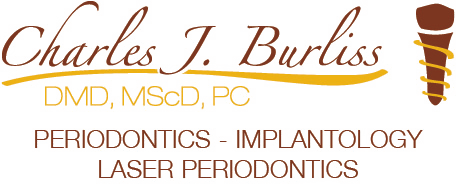
How common is gum disease?

- Gingivitis
There are three main stages of gum disease:

Healthy gums and tooth

Gingivitis
Gingivitis is the earliest stage of gum disease and is caused by plaque buildup around the gum line which causes inflammation of the gums. If you neglect to brush or floss your teeth daily, this plaque buildup will trap bacteria and cause gum disease. Gingivitis causes inflammation of the gums. Gums that should otherwise be pink will appear red and swollen; you could experience bleeding when you brush or floss. However, at this point, gingivitis can still be reversed. The bone and fibers that hold your teeth in place have not yet been affected.

Periodontitis
If gingivitis is left untreated, the condition will become periodontitis. At this stage, the supporting bones and fibers that hold your teeth in place have been irreversibly damaged. Your gums begin to form “pockets,” deep hollow areas around the teeth that trap food, plaque, and bacteria. Your gums will recede and form gaps between your teeth. Immediate treatment is necessary to prevent further damage and tooth loss.

Advanced Periodontitis
In this final stage, periodontitis has been left untreated and has become advanced periodontitis. Bacteria that was allowed to grow, spread, and cause destruction has destroyed the connective tissues and bones that support the teeth. The pockets that formed in the previous stage have become much deeper. Your teeth can shift or loosen. Loose teeth that move around in the mouth may affect your bite. At this state, aggressive treatment is needed to save the teeth.

